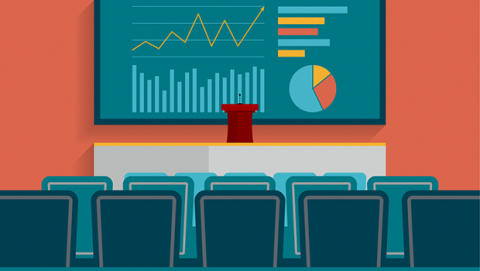The power of pause: I heard about this concept about five years ago, but I never understood the crux of how to use it or where to use it. Or maybe, to be honest, I never took it seriously or believed it. I thought “How can silence make someone talk? Nah! This must be a made-up thing.”
A month ago, I was attending a session on thought leadership and heard about this concept again from a professional trainer. And I was like … “You can’t be serious, this concept really exists!” And, all the conversations that happened during the last five years ran like a flash in my head.
It was a good “Ah-ha” moment for me. And I decided the next minute that I should try out the power of pausing.
[ Want more advice on how to communicate effectively? Read also: Zoom tips: 6 ways to make meetings better. ]
What I learned about the power of the pause
Here’s what I observed and learned when I tried it, in conversations and presentations with my customers and colleagues.
- Pausing is not as easy as it sounds. It is hard to practice silence at the right time and at the right moment.
- Make it a conscious decision. Commit to yourself that you will take pause.
- A well-chosen pause will help you to construct the conversation in a better and structured way.
- When you’re negotiating, a well-chosen pause will help you take control of the situation faster.
- A pause relaxes your thoughts and body, which will help your conversation to be more meaningful and fruitful.
And these observations made me a bit more curious to read and learn about the science behind this with the big question — why is this working?
Why the pause works
While an average person speaks 150 words per minute, our thought rate is at least four times faster. And sometimes in the process of communicating all the thoughts, people speak faster, use extraneous words, and make sentences bigger than necessary. This can create confusion and make your listener lose track of or misunderstand the message that you’re trying to convey.
Take a pause, and it will…
- Give your audience time to process the message, and time to understand and digest the meaning of the message.
- Help you manage the fear of public speaking. The pause will align your thoughts and preparation in the right manner. A break to take a breath in public speaking is good and healthy.
- Help you understand the opposite person’s reaction – and message that they are trying to convey in the conversation.
- Help you avoid the filler words (um, uh, er, ah, like, okay, right, and you know), which will make you sound more confident, clear, and in control of the situation.
What I learned is that usually, public speakers divide pauses into three sizes: short (0.15 seconds,) medium (0.50 seconds,),and long (1.50 seconds.) Try using short and medium when a text is being read. Try using medium and long for spontaneous speech.
Where should you use the pause?
As a start, the easiest and the safest way is to use punctuation marks like commas and periods as reference points for when to use the pause. Punctuation marks help us to construct our sentences in a structured format in writing; pauses will bring the same level of value when you are speaking.
Pauses can also be used after you emphasize an important point, to let it sink in. Or, you can use a pause in conversation to show someone you are listening attentively.
I think the properly timed pause is one of the biggest secrets of all acclaimed public speakers, and how they influence and impact the audience. In my experience, the simplest way to adopt this new habit is to practice, then practice again and again until this becomes your muscle memory.
[ Are you getting Zoomed out? Read 10 ways to fight Zoom fatigue. ]







